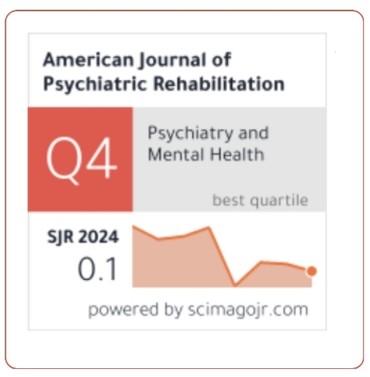A Study on Tourists' Perceptions of Tribal Tourism Destinations in Meghalaya, India
DOI:
https://doi.org/10.69980/ajpr.v28i1.76Keywords:
tribal tourism, tourists, perceptions, destination, north-east India, sustainable tourismAbstract
This study explores tourists' perceptions of tribal tourism destinations in Meghalaya, India, with a focus on their experiences, feedback, and awareness of sustainable tourism practices. The survey reveals that visitors are drawn to the region's rich tribal culture, traditions, and natural landscapes. Tourists largely appreciate the positive impact of their visits on local communities and express a strong willingness to recommend these destinations to others. Awareness of sustainability is high, with many respondents observing efforts towards eco-friendly tourism during their trips. However, the study also highlights areas for improvement, including accessibility, infrastructure, and targeted marketing initiatives. Key suggestions include collaborative efforts between local tribal businesses and government, improved facilities, and increased promotion of sustainable practices. By addressing these areas, Meghalaya has the potential to become a leading example of sustainable tribal tourism, showcasing the balance between cultural preservation and tourism growth.
References
1. Baby, J., & Joseph, A. (2023). Tourists’ Perceptions and Motivations for Local Food. Journal of Business and Management Studies, 5(5), 160–165. https://doi.org/10.32996/jbms.2023.5.5.13
2. Bagchi, S., Ray, S., & Kumar, D. (2023). Tourist perceptions of tourism destinations choice and loyalty: A perspective on developing sustainable rural tourism in Bangladesh. Journal of Tourism Management Research. https://doi.org/10.18488/31.v10i2.3576
3. Bhaumik, S. (2020). Cultural Tourism and Indigenous Communities in Northeast India. Oxford University Press.
4. Buhalis, D. (2000). "Marketing the competitive destination of the future." Tourism Management, 21(1), 97-116.
5. Chakrabarty, R. (2013). "Matrilineal Societies in India: A Study of the Khasi and Jaintia Tribes." International Journal of Social Anthropology, 5(2), 45-60.
6. Chhetri, P., Arrowsmith, C., & Jackson, M. (2004). "Determining Hiking Experiences in the Himalayas: A Case of Meghalaya." Tourism Geographies, 6(3), 327-342.
7. Cohen, E. (1988). "Authenticity and commoditization in tourism." Annals of Tourism Research, 15(3), 371-386.
8. Comparative analysis of domestic and foreign tourists’ perceptions of destination service quality: Evidence from the Buddhist Circuit in India. (n.d.).
9. Echtner, C. M., & Ritchie, J. R. B. (1991). "The meaning and measurement of destination image." Journal of Tourism Studies, 2(2), 2-12.
10. Khan, S. (2013). Perceived and Projected Image of India as a Tourism Destination. https://sajth.com/old/jan2013/Microsoft%20Word%20-%20007%20Sonia%20Khan.pdf
11. Marak, B. (2021). Wangala Festival: The Cultural Identity of the Garo Tribe. Sage Publications.
12. Nongbri, T. (2003). Development, Ethnicity, and Gender in Northeast India. Orient BlackSwan.
13. Pathak, R., & Thakur, M. (2010). "Sacred Groves and Indigenous Conservation Practices in Meghalaya." Indian Journal of Ecology, 37(4), 112-121.
14. Rajamohan, S., Yen, T.-H., & da Gama, G. (2016). A study of the relationships between perceived destination image and recreational needs of travelers to india. https://scholarworks.umass.edu/cgi/viewcontent.cgi?article=1368&context=ttra
15. Roy, B., & Sarma, A. (2019). "Eco-Tourism and Indigenous Livelihoods in Meghalaya." Journal of Sustainable Tourism Studies, 12(1), 78-94.
16. Sharma, K. (2016). Tribal Matrilineal Societies and Their Challenges in the 21st Century. Cambridge University Press.
17. Smith, V. L. (1996). Hosts and Guests: The Anthropology of Tourism. University of Pennsylvania Press.
18. Tiwari, S., & Joshi, M. (2020). "Tourism and Cultural Landscapes in Northeast India." Asian Journal of Tourism Research, 8(1), 95-108.
19. Tourist Perception of the Quality of MSME Products and Services in Tourist Destinations. (2023). 1(02), 7–13. https://doi.org/10.58812/wsee.v1i02.65
20. Tynsong, H., & Tiwari, B. (2020). "Indigenous Ecological Knowledge and Sacred Groves in Meghalaya." Environmental Conservation Journal, 22(2), 55-67.
21. Udawat, T. (2022). Tourism Industry: Travelers’ Perception. Management Dynamics, 7(1), 87–97. https://doi.org/10.57198/2583-4932.1203
22. Wu, D., Batool, H., & Huang, S. (2024). The Relationships Between Tourists’ Perceptions of Cultural Authenticity and Authentic Happiness: Evidence from Ethnic Villages. Journal of Human, Earth, and Future, 5(2), 243–259. https://doi.org/10.28991/hef-2024-05-02-07
23. Yuan, F., & Vui, C. N. (2023). The Influence of Destination Image on Tourists’ Behavioural Intentions: Explore How Tourists’ Perceptions of a Destination Affect Their Intentions to Visit, Revisit, or Recommend It to Others. Journal of Advanced Zoology. https://doi.org/10.17762/jaz.v44is6.2471
24. WEBSITES:
25. https://www.meghalayatourism.in/wp-content/uploads/2023/03/Meghalaya-Tourism-Policy-2023.pdf
26. https://meghalaya.gov.in/dept/45
27. https://ebooks.inflibnet.ac.in/antp05/chapter/tribes-of-indias-north-east/
28. https://www.ncesc.com/geographic-faq/how-many-tribes-are-there-in-north-east-india/
29. https://tribal.nic.in/downloads/statistics/3-STinindiaascensus2011_compressed.pdf
Downloads
Published
Issue
Section
License
Copyright (c) 2025 American Journal of Psychiatric Rehabilitation

This work is licensed under a Creative Commons Attribution 4.0 International License.
This is an Open Access article distributed under the terms of the Creative Commons Attribution 4.0 International License permitting all use, distribution, and reproduction in any medium, provided the work is properly cited.









